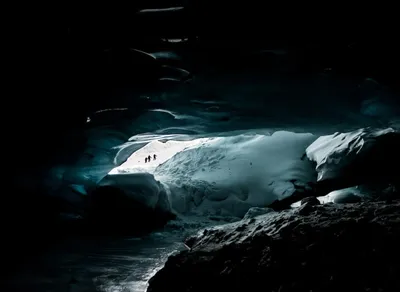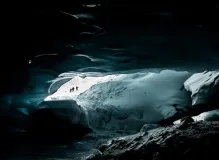For over long years, we have diligently conducted independent research and product testing. When you make a purchase through our links, we may earn a commission.
Trekking: Discovering the Majestic Mount Everest
Created: 9 minutes ago

6 min Read
Keywords: everest base camp trek, annapurna circuit trek, langtang valley trek, elevation of mount everest, trekking in Nepal, hiking in the Himalayas, Kala Patthar, Gorak Shep, Khumbu Icefall, Sagarmatha National Park, tea houses in Nepal, high altitude trekking, trekking gear checklist, Sherpa culture, acclimatization during trekking, Everest view trek, mountain sickness symptoms, trekking permits in Nepal, trekking poles, mountaineering in the Himalayas
Trekking is an exhilarating activity that allows individuals to explore breathtaking landscapes and challenge their physical and mental limits. Among the numerous trekking destinations around the world, the Mount Everest Trek stands out as a legendary journey. Its awe-inspiring beauty, rich cultural heritage, and challenging terrains make it a bucket-list adventure for many outdoor enthusiasts. In this article, we will explore in detail the Mount Everest Trek, its highlights, challenges, and the essential information you need to plan a successful expedition.
The Allure of Mount Everest Trek
Mount Everest, standing at a staggering height of 8,848 meters (29,029 feet), is the highest peak on Earth. It has captivated the imagination of adventurers and mountaineers for centuries. The Everest Base Camp Trek offers a unique opportunity to witness the grandeur of the Himalayas and experience the Sherpa culture in the Everest region of Nepal.
Exploring the Himalayas
The Himalayas, often referred to as the roof of the world, boast some of the most awe-inspiring landscapes on the planet. The Mount Everest Trek takes you through pristine valleys, dense forests, and rugged mountain terrains. From the iconic views of Kala Patthar to the mesmerizing beauty of Gorak Shep and the jaw-dropping Khumbu Icefall, every step of the journey is filled with natural wonders.
Sagarmatha National Park
The Mount Everest Trek is not just about conquering the peak. It is also an opportunity to immerse yourself in the natural beauty and biodiversity of the region. The trek passes through Sagarmatha National Park, a UNESCO World Heritage Site, which is home to a wide range of flora and fauna, including Himalayan Tahr, Musk Deer, and numerous bird species. The lush greenery, alpine forests, and blooming rhododendrons create a picturesque backdrop for trekkers.
Sherpa Culture
The Everest region is not only known for its physical challenges but also for its rich cultural heritage. The Sherpa people, an ethnic group indigenous to the Himalayas, have a unique way of life deeply rooted in Buddhist traditions. Along the trekking trail, you will encounter traditional Sherpa villages, ancient monasteries, and prayer flags fluttering in the mountain breeze. Engaging with the warm and hospitable Sherpa community is a significant aspect of the Everest Base Camp Trek.
Planning Your Mount Everest Trek
Embarking on the Mount Everest Trek requires meticulous planning and preparation. Here are some key factors to consider before setting foot on this epic adventure.
Altitude and Elevation of Mount Everest
At an elevation of 8,848 meters (29,029 feet), Mount Everest poses a significant challenge due to its high altitude. The lack of oxygen and extreme weather conditions can make the trek physically demanding and mentally challenging. It is essential to acclimatize properly, follow a gradual ascent plan, and be aware of the symptoms of altitude sickness. Adequate fitness training and mental preparedness are crucial to ensure a safe and successful trek.
Choosing the Right Trekking Route
There are several trekking routes to reach the Everest Base Camp, each offering a unique experience. The most popular routes include the Everest Base Camp Trek, Annapurna Circuit Trek, and Langtang Valley Trek. The Everest Base Camp Trek is the classic route that takes you through breathtaking landscapes and iconic landmarks. The Annapurna Circuit Trek offers diverse terrains, including lush valleys, high mountain passes, and beautiful waterfalls. The Langtang Valley Trek is known for its remote and unspoiled beauty, with stunning views of snow-capped peaks and rhododendron forests.
Required Permits and Regulations
To trek in the Everest region, you will need to obtain various permits and adhere to specific regulations. The most important permits include the Sagarmatha National Park Entry Permit and the TIMS (Trekkers' Information Management System) Card. These permits help fund conservation efforts and ensure the safety and well-being of trekkers. It is essential to acquire the necessary permits through authorized agencies or local authorities before starting your trek.
Essential Trekking Gear Checklist
When trekking in the Himalayas, having the right gear is essential for comfort and safety. Here is a checklist of some essential items you should pack for your Mount Everest Trek:
- Sturdy and comfortable trekking shoes
- Warm and waterproof layers of clothing
- Sleeping bag suitable for low temperatures
- Rucksack or backpack to carry your belongings
- Sunscreen, sunglasses, and a hat to protect from UV rays
- First aid kit including altitude sickness medication
- Trekking poles for stability and balance
- Water bottle and water purification tablets
- Snacks and energy bars for sustenance during the trek
- Headlamp or flashlight for nighttime visibility
- Maps, compass, and GPS device for navigation
Tea Houses and Accommodation
Along the trekking route, you will find a network of tea houses or lodges that provide food, accommodation, and shelter for trekkers. These tea houses offer a unique cultural experience, allowing you to interact with fellow adventurers and enjoy local cuisine. It is advisable to carry some cash as credit cards are not widely accepted in remote areas. Booking tea houses in advance during peak trekking seasons is recommended to secure a place to stay.
Acclimatization and Health Considerations
Proper acclimatization is crucial when trekking in high altitudes to prevent altitude sickness and ensure a safe journey. The Mount Everest Trek includes acclimatization days at strategic points to allow your body to adjust to the thin air. It is important to listen to your body, hydrate well, and take necessary rest days for proper acclimatization. If symptoms of altitude sickness persist or worsen, it is essential to descend to lower altitudes.
Comparing the Mount Everest Trek Routes
To help you choose the right trekking route for your Mount Everest expedition, here is a comparison chart of the three most popular routes:
| Route | Highlights | Difficulty | Duration |
|---|---|---|---|
| Everest Base Camp Trek | Iconic views of Kala Patthar and Everest Base Camp | Moderate to High | 12-16 days |
| Annapurna Circuit Trek | Diverse terrains and stunning mountain passes | Moderate to High | 15-20 days |
| Langtang Valley Trek | Remote and unspoiled beauty with views of snow-capped peaks | Moderate | 9-12 days |
Conclusion
Embarking on the Mount Everest Trek is a once-in-a-lifetime adventure that offers a unique blend of natural beauty, cultural heritage, and physical challenges. From the breathtaking landscapes of the Himalayas to the warm hospitality of the Sherpa people, every aspect of the journey is an experience to cherish. However, it is important to plan and prepare thoroughly to ensure a safe and successful trek. With proper training, acclimatization, and the right gear, you can conquer the world's highest peak and create memories that will last a lifetime. So lace up your trekking boots, embrace the spirit of adventure, and embark on a journey to discover the majestic Mount Everest.
Frequently Asked Questions (FAQs)
What is the best time for trekking in Mount Everest?
The best time for trekking in Mount Everest is during the spring (March to May) and autumn (September to November) seasons. These months offer stable weather conditions and clear views of the mountain.
How long does it take to complete the Everest Base Camp trek?
On average, it takes around 12 to 14 days to complete the Everest Base Camp trek. However, the duration may vary depending on factors such as trekking speed, acclimatization needs, and individual fitness levels.
Is prior trekking experience required for Mount Everest trek?
Prior trekking experience is not mandatory for the Mount Everest trek. However, it is recommended to have a good level of fitness and endurance as the trek involves long durations of hiking in high altitudes.
What are the major challenges of trekking in Mount Everest?
The major challenges of trekking in Mount Everest include high altitude sickness, extreme weather conditions, rugged terrains, and physically demanding trails. It is crucial to be well-prepared and acclimatize properly to mitigate these challenges.
Are there any age restrictions for the Mount Everest trek?
There is no official age restriction for the Mount Everest trek. However, trekkers need to be in good health and physical condition to handle the demands of the trek. It is advisable to consult with a medical professional before attempting the trek, especially for older individuals.
What permits are required for trekking in Mount Everest region?
To trek in the Mount Everest region, trekkers need to obtain two permits: the Sagarmatha National Park Entry Permit and the Khumbu Pasang Lhamu Rural Municipality Permit. These permits can be obtained through registered trekking agencies or at the entry checkpoints of the respective areas.
What type of accommodation is available during the trek?
During the trek, there are tea houses and lodges available along the route. These provide basic accommodation and meals for trekkers. It is advisable to book accommodations in advance, especially during peak trekking seasons.
What essentials should I pack for the Mount Everest trek?
Some essential items to pack for the Mount Everest trek include warm clothing, sturdy trekking boots, sleeping bag, water bottle, first aid kit, sunscreen, sunglasses, and a trekking pole. It is important to pack light but carry all necessary items for the trek.
Is it safe to drink water during the Mount Everest trek?
It is generally not safe to drink tap water during the Mount Everest trek. Trekkers are advised to carry water purification tablets or use water filters to ensure safe drinking water. Bottled water is also available at tea houses and lodges.
Are there any emergency services available during the trek?
Yes, there are emergency services available during the trek. There are medical facilities and rescue services in the region. It is recommended to have travel insurance that covers emergency evacuation in case of any unforeseen circumstances.

